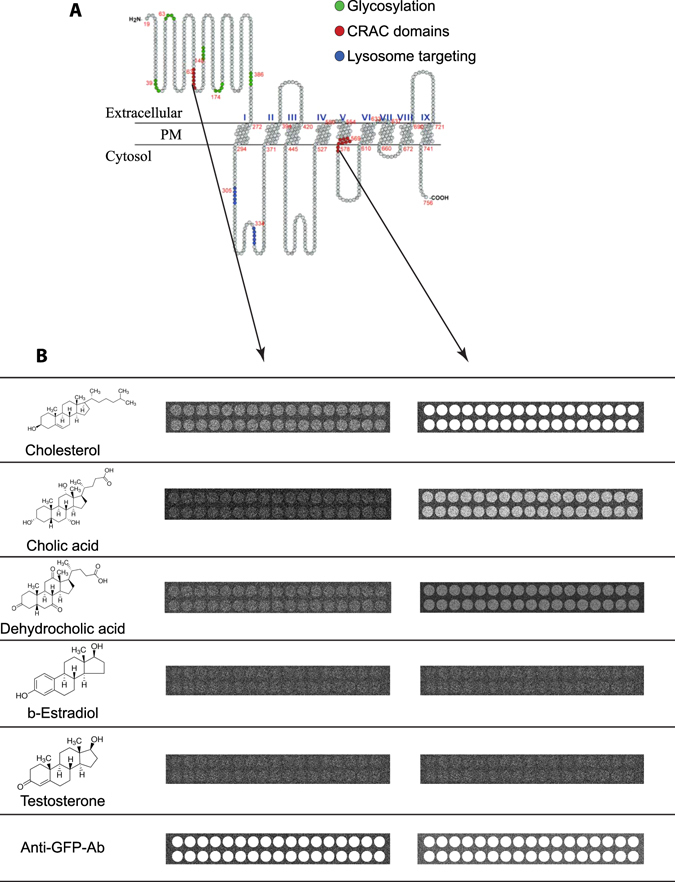Figure 6.

Sterol microarrays suggest that the transmembrane CRAC domain from SIDT1 binds several sterols. (A) Cartoon illustrating the putative secondary structure of SIDT1. The nine putative transmembrane domains are shown. In red are mark the amino acids forming the two CRAC domains and in blue a putative lysosome localization signal (not explored in the present study). (B) TIRFM-based microarray studies illustrating the spots containing the following sterols tested: cholesterol, cholic acid, dehydrocholic acid, β-estradiol and testosterone. As positive control, some spots in the microarray were printed with an anti-GFP antibody (lower panels). Each microarray contained 2 lines of 17 spots each. The fluorescence illustrated represents the binding of the fusion protein formed by the CRAC domain attached to GFP. For CRAC domain sequences, please refer to Material and Methods. Notice that the extracellular CRAC domain did not bind any of the sterols tested while the transmembrane CRAC domain binds to cholesterol and only weakly to cholic acid. Both fusion proteins bind strongly to the anti-GFP antibody.
